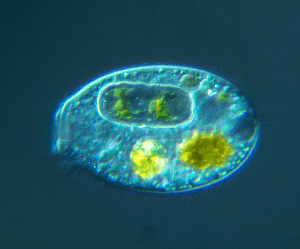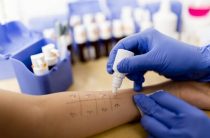Allergy symptoms can take a person by surprise.
Sometimes, they appear for the first time at a fairly mature age, in children or pregnant women. Not all allergic reactions develop instantly. In many cases, several days can pass between the body's response to an allergen. Especially often this situation occurs with allergic dermatitis. In modern medicine, a number of highly accurate analyzes are used to diagnose allergies. Diagnostics is carried out both by in-vivo (inside the body) and in-vitro (outside the body) methods. Both of these methods have both advantages and disadvantages, the choice of a specific diagnostic method is determined by the patient's condition. The main representatives of the in-vivo method are skin and provocative tests. The in-vitro method is represented by a blood test for antibodies.
Skin tests
Skin tests are a special diagnostic examination technique for allergic diseases, which is based on observing the behavior of the skin in contact with allergens. There are various test panels that are used to identify a suspected allergen. The need to use all test panels is extremely rare. Basically, the range of suspected allergens is significantly narrowed when certain data from the patient are obtained, which indicate the nature of the alleged allergen.
Contraindications:
- Pregnancy and feeding;
- Early age of the child (up to 3 years);
- The presence of oncological diseases;
- Infectious diseases;
- AIDS, syphilis, tuberculosis;
- Diseases with skin manifestations;
- Active stage of allergy;
 There are several options for skin testing. They are distinguished by the way they are carried out. This may include placing the allergen in small incisions or punctures, injecting with a syringe, or applying a special material soaked in allergen solutions. After that, the behavior of the skin area that interacts with the allergen is observed. A positive reaction, with skin tests, is the appearance of various kinds of inflammation, blisters, rashes, skin irritations localized at the points of contact with the allergen.
There are several options for skin testing. They are distinguished by the way they are carried out. This may include placing the allergen in small incisions or punctures, injecting with a syringe, or applying a special material soaked in allergen solutions. After that, the behavior of the skin area that interacts with the allergen is observed. A positive reaction, with skin tests, is the appearance of various kinds of inflammation, blisters, rashes, skin irritations localized at the points of contact with the allergen.
It is important to remember that skin tests are a diagnostic method based on observing the occurrence of an allergic reaction. Therefore, before it is not used means to relieve the symptoms of allergies.
The preferred sites for skin testing are the forearm and back, since the skin in this area reacts to various allergens with a high degree of sensitivity.
Provocative tests
Provocative tests are a diagnostic method that gives the most accurate result about an allergic predisposition to a particular substance. These tests are provocative because the patient, with the help of the introduction of an allergen solution, determines the presence or absence of an allergy. Provocative tests can be carried out by drip, inhalation or orally, depending on the nature of the allergen.
In no case can you independently conduct such events. It must be understood that in this case we are not talking about the introduction of allergens in their pure form, but about their solutions in a minimum concentration that cannot be made independently. In addition, with provocative tests, there is a direct risk of complications, even if performed correctly.
The solutions used for instillation of the eyes, nose, inhalations have a different composition, as well as indicators of acid-base balance.
Blood tests for antibodies
Antibodies are proteins that take part in the development of allergic reactions. This diagnostic method is less accurate than in-vivo diagnostics, but it is completely safe, since the reaction of blood cells is monitored outside the body. Antibodies are proteins that are produced in response to allergens and combine with them to stimulate the production of histamine, which is essential for the development of allergy symptoms.
In order to take a blood test, it is mandatory to follow the doctor's instructions regarding dietary restrictions before the procedure. A blood test for allergies is necessarily performed on an empty stomach.
Antibodies in allergies show activity in different ways. Some are used to immediately cause symptoms of an immediate type of allergy (bronchial asthma, sneezing, inflammation of the eyes, etc.). Other. as in dermatitis are used to provoke reactions that develop in the long term. During an allergy, it is necessary to measure the levels of various allergens, as they may be involved in the development of allergy symptoms.
When analyzing for antibodies, it is necessary to carry out differential diagnostics with helminthic invasions, since they have a common symptomatic picture and test results.
IgE are antibodies of a general typology. They are found in large quantities in the venous blood, from where the material is taken. IgE provokes allergic reactions that occur urgently. The maximum interval between such reactions and direct contact with the allergen is a couple of hours. Basically, manifestations of allergic rhinitis, conjunctivitis, bronchial asthma and urticaria are associated with the work of this protein.
IgG are special antibodies that are involved in the formation of a delayed immune response. They are involved in the formation of symptoms of neurodermatitis. Most often they are involved in the formation of immune responses in food allergies.
A blood test for the production of antibodies is carried out in the laboratory. To do this, the blood material lends itself to contact with the alleged allergens, then when the allergen enters, the immune cells begin to produce antibodies.
Food Allergy Diagnosis
Of particular importance are the methods of diagnosing blood in cases of morbidity with food allergies. This is due to the slow nature of the immune response that occurs when a food allergen enters. If, with an allergy to pollen, symptoms develop already after 20 seconds after the allergen has entered, then with a food allergy, the immune response becomes noticeable only after 2-3 days. Food allergies, as such, are not treated. The use of medications only relieves the symptoms. The best way to avoid food allergies is to avoid foods that trigger them. Naturally, for this you need to know which foods cause allergies.
Diagnosis of the presence of special antibodies occurs under the action of special enzymes, due to which their laboratory observation becomes possible. The degree of severity of immune reactions ranges from 1 to 4x, where 4e is the highest allergenicity of the product. The list of probable allergen can be narrowed down after personal communication with the patient, during which the diet is clarified within 2 weeks. After that, the allergens of not consumed products are deleted from the diagnostic list.
Food allergy occurs with an increase in the level of IgG antibodies. After the allergen product ceases to be eaten, their level gradually returns to normal, which is observed during re-diagnosis, after 2-3 weeks.
The development of an allergic reaction to food products may be associated with a violation of the integrity of the intestinal mucosa, which leads to the penetration of incompletely digested components.
In this case, they bind to IgG antibodies. Such complexes are giant macromolecules that can disrupt the functioning of various organs and their systems. Most often, this phenomenon occurs during the intake of alcoholic beverages, tobacco smoking, constant malnutrition, as well as due to the use of corticosteroids, as well as non-steroidal anti-inflammatory drugs.
With this development of an allergic reaction, it can be accompanied, in addition to the symptoms of food allergies: depression, weakness, gastrointestinal disorders, heart disorders, pain in the abdomen, migraine attacks.
General blood test for allergies
Allergies can also provoke various health disorders that cause, in addition to special symptoms, general health disorders. For this reason, a general analysis of the biochemical components of the blood is mandatory. Allergy symptoms can have much in common with the symptoms of diseases such as dysbacteriosis, various immunodeficiencies, as well as diseases provoked by helminthic activity. For this reason, first of all, a general blood test is performed, on the basis of which further diagnosis of allergies, as well as other diseases, is carried out.
A general blood test for allergies first of all allows you to determine the general state of immunity, which can serve as a basis for suspicion, both for allergic reactions and for other diseases or disorders that can both exclude allergic reactions and serve as concomitant diseases.
Blood is not only a transport organ, but also an organ of immunity, which may contain information about allergic reactions, inflammatory processes, etc. When diagnosing allergies, the following indicators are important:
Leukocytes are immune cells that have various mechanisms to fight harmful factors, infections, parasites, and toxic agents. They are divided into various subclasses with different mechanisms of immune response, including: the production of antibodies, the destruction of parasite cells, the binding and neutralization of toxic agents.
Their level rises when:
- Active stages of purulent inflammation;
- Burn conditions, traumatization of tissues with violation of their integrity;
- With rheumatism and oncology;
- In the postoperative period;
- Leukemia
Eosinophils are a type of immune cell that produce antibodies to fight various viruses, infections, and parasitic invasions. With allergic reactions, their level often rises. An increase in the level of eosinophils (eosinophilia) is also characteristic of:
- intestinal parasite infestations;
- tuberculosis;
- scarlet fever;
- arthritis.
Basophils are blood cells that are very rare. Their levels may increase with food allergies, as their inflammatory activity causes the development of symptoms of allergic dermatitis, which is also characteristic of drug allergies. The following states also occur as they level up:
- wind pox;
- anemia (hemolytic);
- nephrosis;
- colitis (ulcerative);
- surgery to remove the spleen















